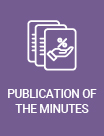Diffusion of crime control benefits: Forced eradication and coca crops in Colombia
The series Documentos de Trabajo Sobre Economía Regional y Urbana is a publication of Banco de la República in Cartagena. The opinions contained in this document are the sole responsibility of the authors and do not commit Banco de la República or its Board of Directors.
Abstract
One explanation for the increasing number of hectares with coca cultivation is that eradication strategies displace coca crops but fail to completely clear affected areas. In the drug policy literature, that dynamic shifting is commonly known as the balloon effect. This study integrates georeferenced agricultural data through spatially explicit econometric models to test the hypothesis that forced eradication displace coca crops. Using annual data for 1,116 contiguous municipalities in Colombia between 2001 and 2015, we estimate a spatial Durbin model with municipal and time fixed effects. Our results suggest that, on average, aerial fumigation in a municipality diffuses the benefits of this crime control strategy to neighboring municipalities.














.png)

































